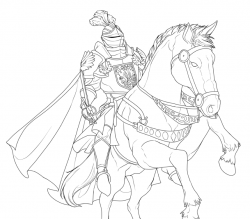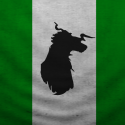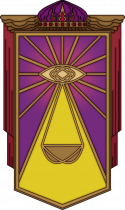More actions
No edit summary |
No edit summary |
||
| Line 13: | Line 13: | ||
}} | }} | ||
---- | ---- | ||
{{Subject Table | |||
|title = Villiers-Eclair Order | |||
|color = 99E5B8 | |||
|image =Unionismlaaol.png | |||
|caption = Defenders of the Faith, Protecting the Unionist Divine | |||
|text = | |||
The School of Villiers-Eclaire is a school that is relatively new and based out of the island of Basta, in the Regalian Archipelago. The Villiers-Eclaire School was largely made to provide the Sancella of Unionism with a failsafe in case the more freely moving Lancyon Halberdiers would prove too disloyal to the Sancella, and also to counter the less religiously-minded other Knightly Orders. The School of Villiers-Eclaire is largely funded and supported by the de Gosselin family, many of whose members are also high ranking Elders in the order. It should as such come as no surprise that many of the Villiers Knights serve in the de Gosselin’s personal retinue and military forces, and accompanied Duke Florent I’s attempt to seize Ithania. While criticized by the other military orders for their heavily political agenda, the Order continues to remain an example of the Unionist Faith, fighting on behalf of the Synod to spread the faith. | |||
}} | |||
---- | |||
[[category:Knights]] | [[category:Knights]] | ||
Revision as of 01:24, 30 October 2020
testing formatting stuff, nothing really special

The term “knight” comes from the Alt-Regalian “Knecht” which loosely translates to bondsman or vassal. Presumably, the word dates back to the old Ceardian “kniucht” which loosely translates to superior warrior. In the days of the old Ceardian Humans, proto-knights were the warlords who ruled smaller fiefs and waged wars on one another in a period that is generally viewed as Humanity’s forgotten age. When the states formed, or the Regalian Kingdom more specifically, these warriors became distinguished titleholders who ruled in the King’s stead much like how the nobility does in the present day. Eventually, Julian de Montverrat fought on behalf of the Five Families, using his military skills to seize the city gates which ultimately ended the Rebellion. This is when Knight became synonymous with ‘trained warrior’, and the first of the Knightly Military Orders were established. The term chivalry comes from the Ithanian word “chevalerie” which can be translated as horse soldier. Before Ithanian pacifism became prevalent, Ithanians cultivated the most talented horse riders. Owning a horse usually implied one’s wealth, and with wealth one was expected to distinguish themselves from the peasantry by courteous and honorable behavior.
| ||||||||

